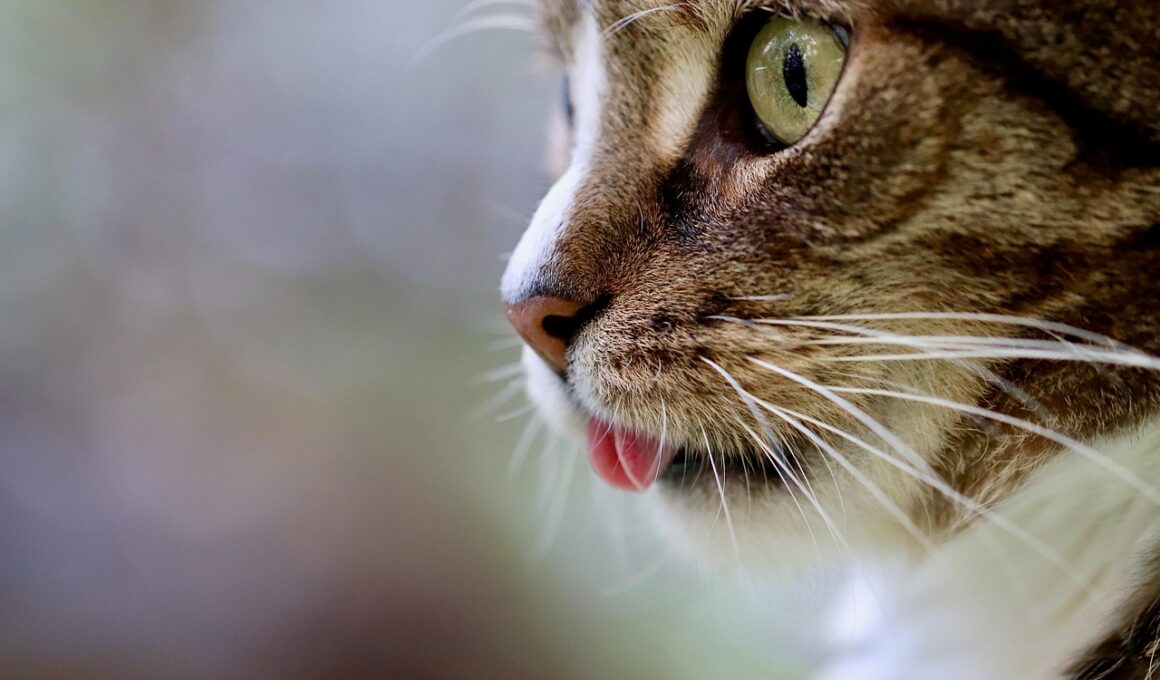Cat Therapy Programs: What to Expect and How to Participate
Cat therapy programs are increasingly popular, providing both emotional support and companionship to individuals dealing with various challenges. These programs are designed to enhance well-being by utilizing the unique traits of cats, including their calming presence and playful behavior. Participants can expect to engage in therapeutic activities that focus on interaction with trained therapy cats. Through guided sessions, participants generally learn to connect with the animals, reducing anxiety and stress. The first step in participating often involves an orientation session, where participants are educated about the benefits of feline companionship. These sessions may also cover how to approach and handle therapy cats properly to ensure mutual comfort. Cat therapy can improve emotional resilience, boost mood, and foster a sense of community among participants. York University emphasizes the connection between animals and human health in their studies. Cat therapy is not just about interaction; it’s a holistic approach to mental wellness. Those interested should research local programs that offer these opportunities, as they can vary greatly in goals, structure, and settings, ensuring a comprehensive experience with these loving creatures.
Engaging in cat therapy can bring numerous benefits that extend beyond emotional support. Participants often find that interacting with therapy cats can lower blood pressure and reduce feelings of loneliness. Studies have shown that spending time with animals can release endorphins, which create a sense of happiness and calmness. Many programs also include structured activities, such as creating toys or participating in grooming sessions, which can enhance the bond between humans and cats. Additionally, these activities can help improve fine motor skills and increase overall physical activity levels. Participants may also learn essential caregiving techniques that can be applied both in therapy settings and in their homes. Furthermore, cat therapy programs can act as social platforms where individuals connect with like-minded people, fostering friendships and support networks. Individuals may also share personal stories and coping strategies, promoting mutual understanding and healing. An essential aspect of these programs is the focus on stress relief. Through play and interaction, participants often report a significant reduction in daily stressors, making cat therapy an invaluable resource for many. Local shelters usually have information on available sessions; interested individuals should seek these resources promptly for engagement and participation.
How to Choose the Right Cat Therapy Program
Choosing the right cat therapy program involves careful consideration of various factors to ensure a positive experience. First, participants should research organizations that are reputable and have certified therapy animals. Reviews and testimonials can be helpful in evaluating the effectiveness of different programs. It’s essential to look for programs that prioritize the welfare of both the therapy cats and the participants. Additionally, understanding the structure of the program is crucial. Some programs may be focused on group sessions, while others offer one-on-one interactions, catering to different needs and comfort levels. Inquiring about the qualifications of the facilitators is important too. Trained professionals in animal-assisted therapy should lead the sessions. Observing a trial session can also provide insights into how the program operates and how well it aligns with personal goals. Cost is another consideration, as some programs may offer sliding scale fees based on income. Lastly, potential participants should assess their personal preferences and comfort levels with cats, as individual interactions can deeply influence therapeutic outcomes.
In many regions, you can find various cat therapy programs tailored to different demographics or needs. Programs may be specifically designed for children, adults, seniors, or individuals with disabilities or mental health conditions. For example, some organizations focus on integrating therapy cats in schools to support children’s emotional and social development, while others might cater to therapy for elderly populations in nursing homes. Typically, these programs employ certified therapy cats trained to interact appropriately with different age groups and sensitivities. Participants are often encouraged to share their experiences, which helps facilitators adjust the program according to their feedback. Moreover, educational components often accompany therapy sessions, offering participants insight into feline behavior and care. Such knowledge enriches interactions and enhances the overall experience. Networking within these communities can create longstanding bonds not only among participants but also with the therapy cats themselves, fostering attachment and connection. Engaging consistently with therapy cats can improve participants’ emotional health and stability. Local mental health resources might provide valuable information on accessing these programs, ensuring more people can benefit from the joy and comfort of therapy cats.
Understanding the Impact of Therapy Cats
Therapy cats have a significant impact on those they interact with, providing therapeutic benefits that are recognized widely. These impact assessments have been fundamental in demonstrating how therapy animals facilitate emotional healing. Cats often possess unique qualities—they tend to be naturally calm and affectionate, which can help reduce anxiety and promote relaxation. Many studies highlight that the presence of cats can soothe and ease feelings of loneliness. In some programs, therapy cats are trained to engage in specific activities that actively promote interaction, such as playing or resting on participants’ laps. This tactile contact can enhance feelings of well-being and comfort, especially for those facing mental health challenges. Participants frequently report increased feelings of happiness and decreased anxiety levels during and after sessions. Furthermore, the program structure may also include educational components on responsible cat ownership, allowing participants to gain practical insights. Ultimately, therapy cats contribute positively to participants’ mental health journeys, effectively creating a buoyant, interactive atmosphere that encourages connection and healing through companionship. Choosing sessions that focus on personal needs is vital for harnessing these benefits for each individual involved.
Incorporating cat therapy into one’s life may involve ongoing commitments, ranging from weekly sessions to irregular participation. Participants need to maintain an open mindset and be prepared for emotional interactions. Regular engagement allows individuals to develop meaningful relationships with the therapy cats, which is essential for benefit realization. Some participants may choose to volunteer in cat therapy programs, enabling a deeper understanding of the animals and additional therapeutic experiences. This involvement can also promote a sense of agency and responsibility. Unlike typical therapy settings, cat therapy sessions emphasize a less formal structure, allowing participants to feel more relaxed. This flexibility helps ease any anxieties participants may feel regarding their emotional issues. Furthermore, building a routine around attending cat therapy can yield long-term benefits, helping participants to cultivate coping strategies. Families may also embrace gathering as a way to engage with the programs collectively, which may foster a nurturing environment for children. As a result, the emotional growth and support are often experienced at multiple levels, ensuring a well-rounded therapeutic journey for each participant in these programs.
Final Thoughts on Cat Therapy Benefits
Cat therapy programs offer unique opportunities for individuals seeking emotional support, connection, and overall well-being. By interacting with therapy cats, participants experience companionship that can alleviate feelings of isolation and anxiety, contributing positively to their mental health journey. Understanding how these programs work and choosing the right one is crucial for maximizing benefits. Those interested should explore local offerings and community resources that facilitate access to these enriching experiences. Sharing personal goals and expectations with facilitators can significantly enhance the tailored experience for every participant. Furthermore, connecting with other participants fosters a sense of belonging and creates a collaborative environment for emotional healing. The positive impact of therapy cats extends beyond individual sessions; it can influence overall mental health over time. Participants should remain open to the possibilities and enjoy the emotional rewards that come with regular cat therapy. Individuals should not hesitate to reach out to local organizations as they seek to enhance their emotional health and well-being. Therapy cats play an integral role in facilitating these emotional journeys, offering unconditional love and support that ultimately benefits us all.





